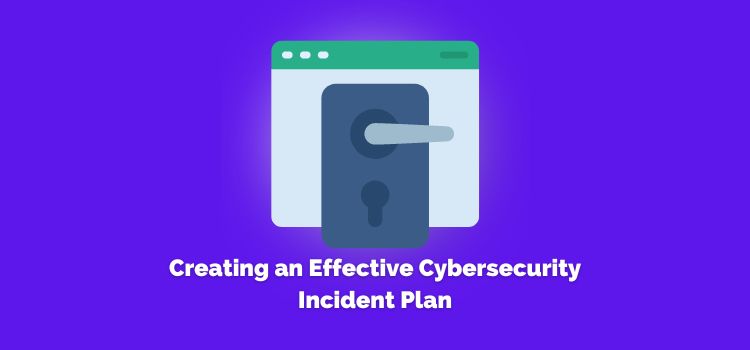In an era where digital landscapes are expanding at an unprecedented rate, ensuring the safety and security of sensitive data has become paramount. A robust cybersecurity incident plan is your organization’s first line of defense against potential threats, vulnerabilities, and data breaches.

PIA (Private Internet Access) recommends using reliable tools to handle and protect sensitive information. This article will explore the steps necessary to create an effective cybersecurity incident plan, emphasizing the importance of taking the right steps.
Step 1: Assembling a cross-functional team
Creating a cybersecurity incident plan necessitates a collaborative effort involving individuals with diverse skill sets and expertise. Assemble a cross-functional team comprising IT specialists, legal experts, communication professionals, and relevant stakeholders from various departments. This diverse team will offer a comprehensive perspective on potential vulnerabilities and effective mitigation strategies.
Step 2: Identifying potential threats and vulnerabilities
It’s crucial to have a clear understanding of the potential threats and vulnerabilities your organization might face to build a robust incident plan. This involves conducting a thorough risk assessment to identify potential entry points for cyberattacks, weak links in your security infrastructure, and possible points of data compromise. Consider both internal and external threats, ranging from insider attacks to sophisticated external hacking attempts.
Step 3: Creating incident response strategies
Once potential threats and vulnerabilities are identified, the next step is formulating detailed incident response strategies. Each strategy should outline specific actions to be taken during a cybersecurity incident. This includes procedures for containing the breach, minimizing damage, notifying affected parties, and restoring systems to normal operation. Assign responsibilities to team members for each response stage to ensure a swift and coordinated reaction.
Step 4: Implementing security controls
Security controls are the preventive measures to minimize the likelihood of cybersecurity incidents. These controls can include encryption protocols, multi-factor authentication, regular system patching, and employee cybersecurity training. Implementing a combination of technical and procedural controls enhances your organization’s overall security posture and reduces the potential impact of an incident.
Step 5: Conducting regular training and drills
A cybersecurity incident plan is only effective if your team is well-prepared to execute it. Regular training sessions and simulated drills can help your team members understand their roles and responsibilities during an incident. These exercises also offer an opportunity to identify potential gaps in your plan and refine it based on real-time feedback.
Step 6: Monitoring, evaluating, and updating the plan
Cybersecurity threats are ever-evolving, making it imperative to monitor and assess your incident plan’s effectiveness continuously. Regularly review your plan, considering emerging threats, regulation changes, and security technology advancements. Incorporate lessons learned from real incidents and drills to fine-tune your plan and ensure its relevance.
Why is it important to have a cybersecurity incident plan?
In today’s interconnected digital landscape, a robust cybersecurity incident plan is not just a recommended strategy but an essential safeguard for any organization. Cyber threats’ escalating frequency and sophistication highlight the critical importance of being prepared for potential breaches.
Such incidents can result in substantial financial losses, reputational damage, legal liabilities, and compromised customer trust. A well-structured incident plan serves as a proactive defense mechanism, allowing organizations to swiftly detect, contain, and mitigate the impact of security breaches.
It outlines clear roles and responsibilities, accelerates response times, and minimizes disruption, ultimately reducing recovery costs. Moreover, having a comprehensive plan demonstrates a commitment to data protection and privacy, fostering trust among stakeholders, customers, and partners.
By addressing vulnerabilities and regularly updating strategies, organizations can effectively navigate the complex landscape of cyber threats and ensure the continuity of their operations.
Organizations must proactively protect their sensitive data from cyber threats. A well-structured cybersecurity incident plan is an essential tool in this endeavor.
Using reliable tools ensures that privacy concerns are adequately addressed throughout the incident response process. Remember, the key to a successful cybersecurity incident plan lies in its proactive approach, cross-functional collaboration, and a commitment to continuous improvement.
As you work towards creating and refining your plan, you’re enhancing your organization’s security and bolstering your stakeholders’ trust in an increasingly interconnected world.